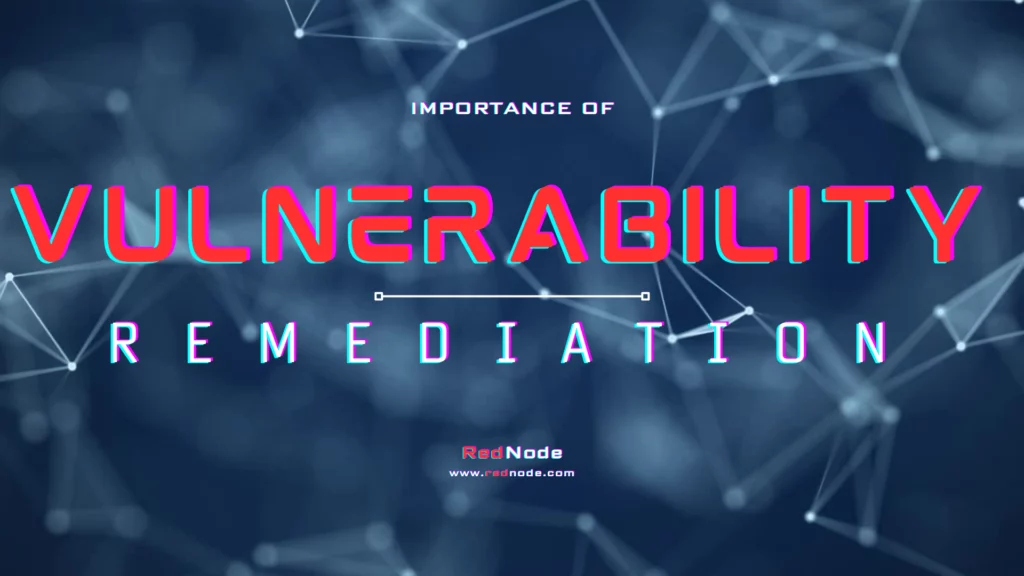Vulnerability remediation is the process of identifying, assessing, and resolving security vulnerabilities in an IT environment. This process is essential for maintaining the security of an organization’s systems and data.
Table of Contents

Why Vulnerability Remediation is important?
Vulnerability remediation is the process of correcting or mitigating security vulnerabilities in computer systems and software. It is an essential part of any organization’s security posture, as it helps protect against malicious attacks. There are several reasons why vulnerability remediation is important:
- To protect sensitive information: Attackers could exploit vulnerabilities to gain access to sensitive data, such as financial information, customer records, or intellectual property. By remediating vulnerabilities, organizations can help protect this data from unauthorized access.
- To prevent data breaches: A data breach can have a devastating impact on an organization, both financially and reputationally. By remediating vulnerabilities, organizations can help reduce the risk of a data breach.
- To comply with regulations: Many regulations, such as the Payment Card Industry Data Security Standard (PCI DSS) and the Health Insurance Portability and Accountability Act (HIPAA), require organizations to take steps to protect sensitive data. By remediating vulnerabilities, organizations can help demonstrate compliance with these regulations.
- To improve the overall security posture: Vulnerability remediation is an important part of an overall security strategy. By remediating vulnerabilities, organizations can help improve their overall security posture and reduce the risk of attack.
In short, vulnerability remediation is an essential part of any organization’s security posture. By remediating vulnerabilities, organizations can help protect sensitive data, prevent data breaches, comply with regulations, and improve overall security posture.
Here are some additional benefits of vulnerability remediation:
- Downtime is reduced: Vulnerabilities can be exploited to cause downtime, which can be costly and disruptive to an organization. By remediating vulnerabilities, organizations can help reduce the risk of downtime.
- Increased productivity: Vulnerabilities can also lead to decreased productivity, as employees may be forced to spend time dealing with security issues. By addressing vulnerabilities, organizations can help free up employees to focus on their core tasks.
- Improved customer satisfaction: Customers are concerned about the security of their data. By addressing weaknesses, organizations can help improve customer satisfaction and loyalty.
Overall, vulnerability remediation is an important investment that can help organizations protect their data, prevent data breaches, comply with regulations, and improve overall security posture.

What kind of experts do you need to hire for Vulnerability Remediation?
Vulnerability remediation can be done by different teams or experts depending on the size and complexity of the organization. In smaller organizations, the responsibility for vulnerability remediation may fall on a single team or individual, such as the IT department or security engineers. In larger organizations, there may be a dedicated vulnerability management team or a team of security experts who are responsible for remediating vulnerabilities. Some common roles involved in vulnerability remediation include:
- Vulnerability Analyst: These individuals are responsible for identifying and evaluating vulnerabilities. They use vulnerability scanning tools and other techniques to identify vulnerabilities in an organization’s systems and software.
- Penetration testers: These individuals are responsible for testing the security of an organization’s systems and software. They try to exploit vulnerabilities to identify and assess the risk of a successful attack.
- Security Engineers: These people are responsible for remediating vulnerabilities. They work with vulnerability analysts and penetration testers to identify and fix vulnerabilities in an organization’s systems and software.
- Security Architects: These individuals are responsible for designing and implementing security controls to protect an organization’s systems and software from attack. They work with vulnerability analysts, penetration testers, and security engineers to ensure vulnerabilities are remediated in a way that does not compromise the organization’s overall security posture.
The specific team or expert organization responsible for vulnerability remediation will vary depending on the size and complexity. However, all organizations should have a process in place to identify, assess and remediate vulnerabilities to protect their systems and data from attack.
Steps for Vulnerability Remediation
The steps for vulnerability remediation are:
- Identify vulnerabilities: This can be done through vulnerability scanning, penetration testing, or manual analysis.
- Prioritize vulnerabilities: This involves assessing the risk of each vulnerability and determining which ones should be addressed first.
- Remediate vulnerabilities: This can involve applying patches, updating configurations, or removing vulnerable software.
- Verify that vulnerabilities have been remediated: This can be done through re-scanning or manual testing.
- Monitor for new vulnerabilities: This involves ongoing scanning and testing to ensure that new vulnerabilities are identified and remediated in a timely manner.
Here are some additional tips for effective vulnerability remediation:
- Use a vulnerability scanner that is regularly updated with the latest vulnerability data.
- Prioritize vulnerabilities based on their impact.
- Remediate vulnerabilities as quickly as possible.
- Verify that vulnerabilities have been remediated correctly.
- Monitor for new vulnerabilities on a regular basis.
By following these steps, you can help to ensure that your organization’s systems are protected from vulnerabilities.
Here is more detail about each step:
Identify vulnerabilities: The first step in the vulnerability remediation process is to identify the vulnerabilities that exist in your systems. This can be done through vulnerability scanning, penetration testing, or manual analysis.
Vulnerability scanning is an automated process that uses software to scan your systems for known vulnerabilities. Penetration testing is a more manual process that involves having a security expert attempt to exploit vulnerabilities in your systems. The manual analysis involves reviewing your systems’ source code and configurations to identify potential vulnerabilities.
Prioritize vulnerabilities: Once you have identified the vulnerabilities in your systems, you need to prioritize them. This involves assessing the risk of each vulnerability and determining which ones should be addressed first.
There are a number of factors that you can consider when prioritizing vulnerabilities, such as the severity of the vulnerability, the likelihood of it being exploited, and the impact that it could have if it is exploited.
Remediate vulnerabilities: Once you have prioritized the vulnerabilities, you need to remediate them. This can involve applying patches, updating configurations, or removing vulnerable software.
The specific steps that you need to take to remediate a vulnerability will depend on the nature of the vulnerability. However, in general, you should follow the guidance provided by the software vendor or security researcher who discovered the vulnerability.
Verify that vulnerabilities have been remediated: Once you have remediated a vulnerability, you need to verify that it has been remediated correctly. This can be done through re-scanning or manual testing.
Re-scanning involves running the vulnerability scanner again to ensure that the vulnerability has been patched. Manual testing involves manually checking that the vulnerability has been fixed.
Monitor for new vulnerabilities: The final step in the vulnerability remediation process is to monitor for new vulnerabilities. This involves ongoing scanning and testing to ensure that new vulnerabilities are identified and remediated in a timely manner.
By following these steps, you can help to ensure that your organization’s systems are protected from vulnerabilities.
Need help to remediate vulnerabilities, contact RedNode.

